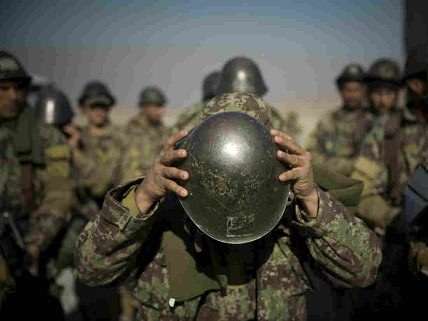US/NATO Combat Mission in Afghanistan Ceremonially Over, Wars Continue


In a ceremonial move NATO closed its operational command headquarters in Kabul, Afghanistan today, lowering its flags to signal the end of the "combat mission." On January 1, U.S and NATO troops will transition to a "support" role for training. Meanwhile the Taliban's campaign in Afghanistan continues, with militants attacking a police station in the south.
According to the bilateral security agreement signed the day after Ashraf Ghani was sworn in as president of Afghanistan, 9,800 U.S. troops and 2,000 NATO troops will remain after the end of the year.
U.S. forces will also continue combat missions against the Taliban, Al-Qaeda, and associated extremists. Importantly, these troops will retain immunity from Afghan law.
The refusal of the Iraqi government in 2008 to include such a provision in the status of forces agreement prevented continued U.S. military operations in that country. Nevertheless, when the war in Iraq ended in 2011, President Obama took credit for it, continuing to do so throughout the campaign trail, disowning it only as Iraq slipped back into chaos and U.S. troops returned.
The U.S. began deploying military personnel back into Iraq on June 16, and began air operations again over Iraq on September 10, and then over Syria on September 22. U.S. operations in Yemen, meanwhile, appear to have evolved into ground raids. The president's most recent war powers report, from June, also places military personnel in Somalia, Niger, and Chad, on various counter-terrorism efforts including the rescue of more than 200 schoolgirls captured by Islamist militants in Nigeria earlier in the year. The U.S. also has fighter aircraft and Patriot missile systems deployed in Jordan since 2013.
Check out Reason's foreign policy issue here.